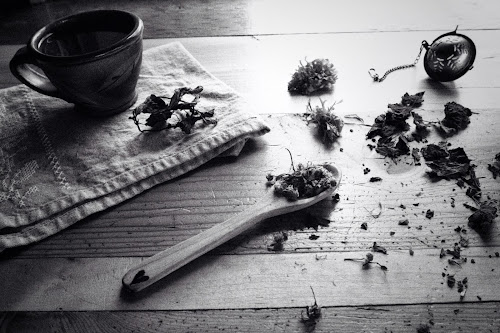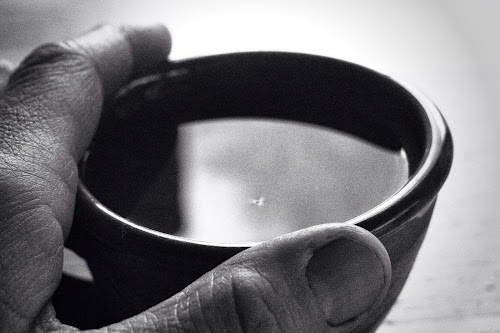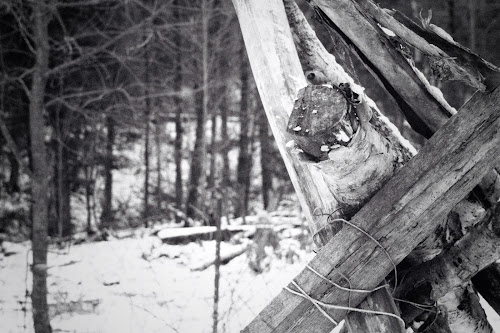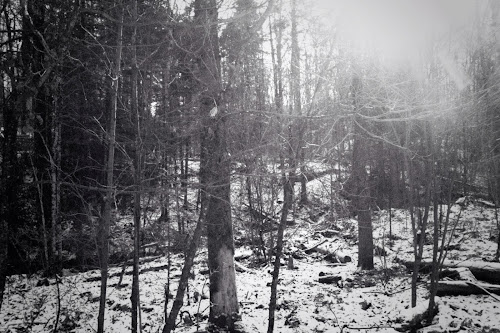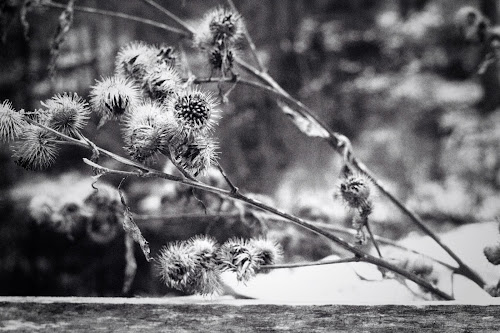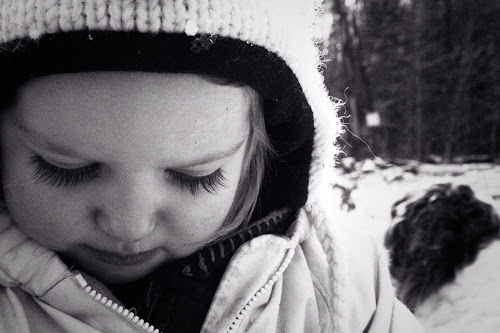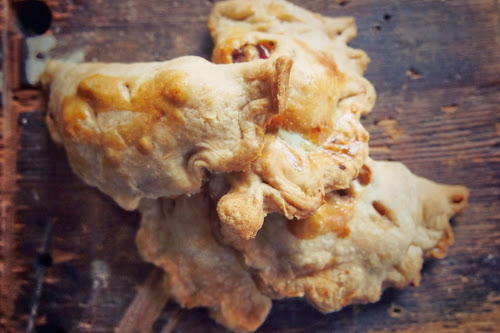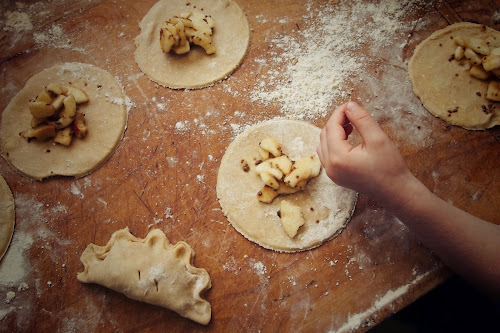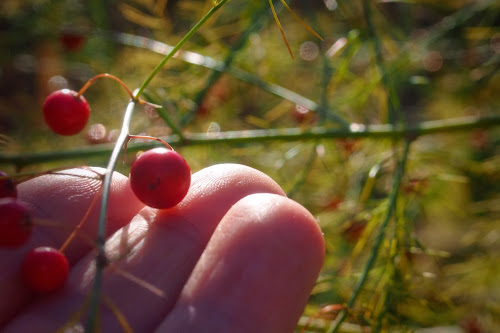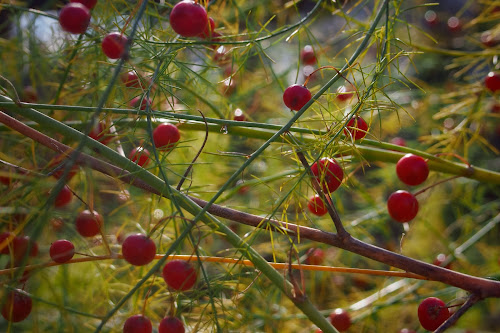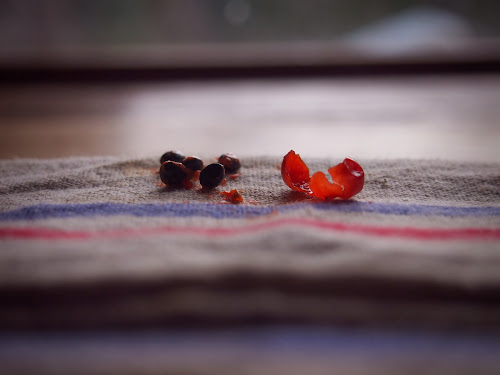With the rain turning to snow, we have found ourselves spending more time outdoors.
The once familiar forest behind our home has turned into a magical white land,
fresh and new to explore.
With cold runny noses and rosy red cheeks we have been poking around the woods, looking for tracks and checking out snow flakes.
Not far, there is a favourite big rock with mounds of green moss,
frozen into perfect form.
Fern loves how Jack Frost paints white paisley frost across the black ice on the creek.
Our winter walks have been followed by a hot tea in front of the woodstove; either a cup of chaga with maple syrup or a fresh minty tea from our garden.
The bees love our summer tea garden as much as we do.
There is calendula, peppermint, spearmint, catnip, bee balm, oregano, chamomile, sage, and lavender, each blossoming throughout the summer and harvested in the fall.
I hung and dried the herbs in the kitchen, then packed them into jars for the Winter.
They are great for adding to baths, infused oils, and of course, tea.
For our Minty Winter Tea:
6 cups water
Two calendula heads
One tablespoon catnip
One tablespoon bee balm
One teaspoon chamomile
Two tablespoons peppermint
Raw honey to taste
Bring 6 cups of water to a boil and let cool slightly.
Add the herbs to the water and let stand for about five minutes.
Strain the tea into cups and sweeten with a little raw honey.
This is best enjoyed after a cool Winter walk,
or with a good book and a cozy blanket.

